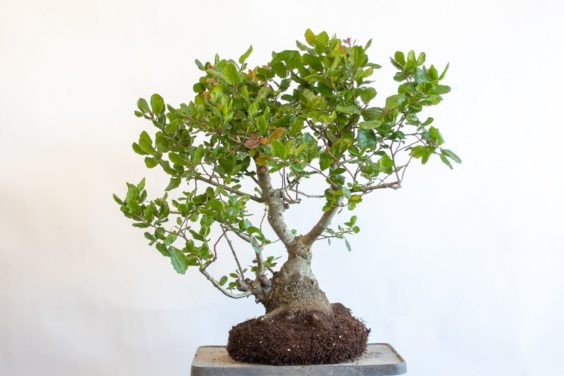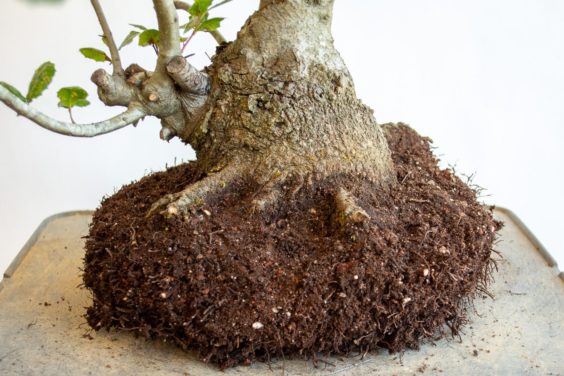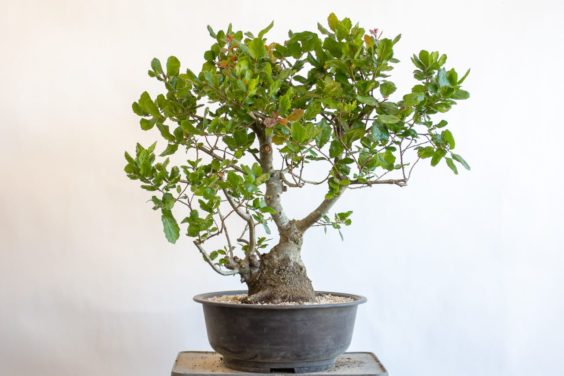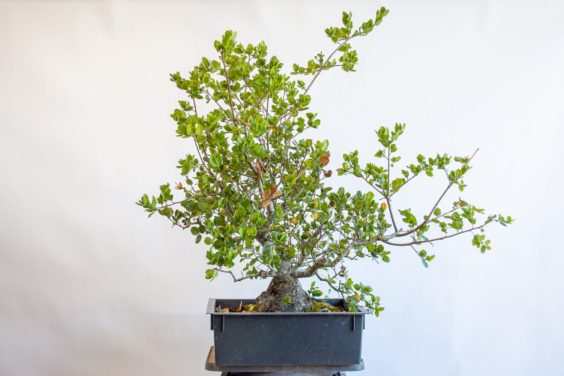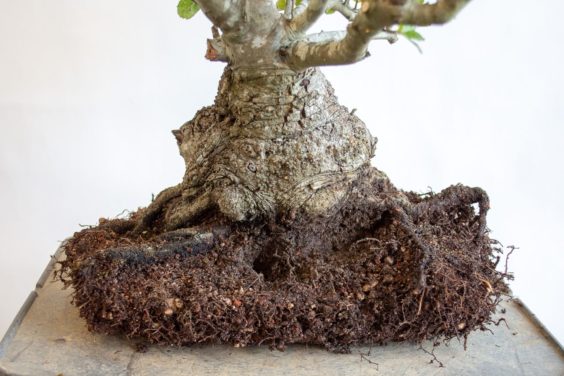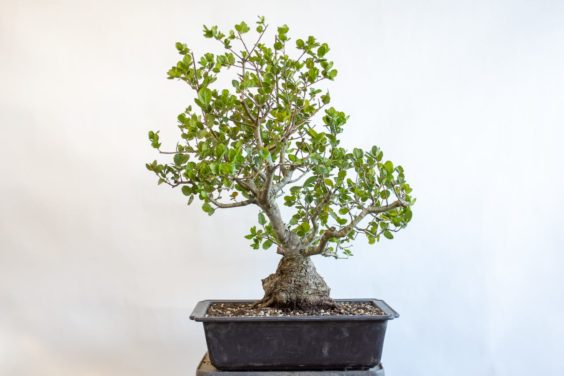I generally don’t do a lot of work on new trees until I have a good idea what shape the roots are in. I’ll water, fertilize and maybe do some cutback but hold off on wiring until I know the tree is strong enough to recover from the work.
When trees are healthy and have been well-cared for, my usual routine includes waiting until the next repotting season before looking at the roots. When trees are in poor soil or poor health, I repot the first chance I get.
Just after I wrapped up this year’s repotting season, I brought a number of new trees into the garden – a mix of coniferous, deciduous and broadleaf evergreen varieties.
By standard measures, it’s “too late” to repot these trees as all of them have produced spring growth. It’s not, however, too late for a more gentle repotting that will help ensure good percolation when I water.
Below is a coast live oak that leafed out well this spring. There are plenty of new shoots and the leaves look healthy. As for the soil, percolation is good but the particles had broken down some time ago. I wanted to take a closer look at the roots so I decided to repot.
Coast live oak – about 30 years from acorn
I removed soil from the perimeter of the rootball but left the center section alone.
After reducing the rootball
Were it winter or early spring, I’d remove more soil and consider bare-rooting up to half of the rootball. Because the tree has started growing, I opted to keep the rootball intact.
Lower trunk and rootball
I planted the tree in a mix of akadama, lava, and pumice, one part each. I also cut back some of the longer branches and removed all dead leaves and twigs. Although I like the way trees look after removing dead foliage, my primary reason for doing so is to set a baseline from which I can better track how the tree responds to the repotting.
After repotting
I had so much fun with this repot that I decided to do another.
Coast live oak – also about 30 years from acorn
This tree wasn’t in good health like the previous oak. The leaves were smaller and covered with spots – signs of fungus. Plus, the new shoots were relatively short considering how good the shoots looked on the first tree. Wanting to get the tree on a better trajectory, I removed more soil from this oak to learn more about what might be keeping it from being healthier. What I found were two patches of field soil in which no roots were growing and a big gap occupied by a clan of sow bugs. I cleared away the bugs and old soil and proceeded with the repotting.
Root-work complete
This is definitely more root work than I’d planned on doing for this time of year, but I’m curious to learn more about repotting oaks out of season. Having purchased several of similar age and health, I can take different approaches and see how each responds. If there are any patterns, I may have some good data points for future experiments.
Apart from removing more soil than I expected, the rest of the repotting was straightforward.
Repotting complete
Both trees are in full sun for the time being as the weather has been mild lately. If it heats up much before the trees have a chance to root out, I’ll likely move them to a sheltered spot in the garden. In the meantime, I’ll make sure the trees get plenty of water. If the foliage looks good a month from now, I’ll start fertilizing and hold off on any more work for the rest of the year.
The post Repotting out of season – bringing new trees into the garden appeared first on Bonsai Tonight.


